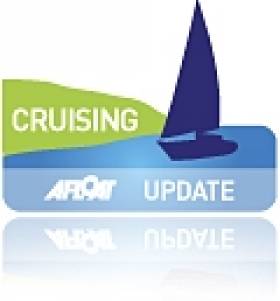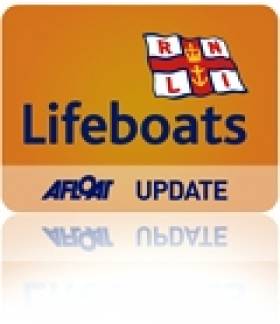Displaying items by tag: cow
Dead Floating Cows Can Be Navigational Hazards
#deadcow – Round–the–World Yachtsman and Afloat.ie reader Pat Murphy says he enjoyed our story about the weekend rescue of a cow by the RNLI in Waterford. Unfortunately, Pat and his wife Olivia related a tale where they came across another cow in the same area (above) that was not so lucky. 'We came across him/her about six miles south of Hook Head while on passage from Waterford to Padstow in Cornwall on August Monday last in our yacht Aldebaran', Pat told Afloat.ie.
'I reported it to Rosslare Coastguard Radio as a navigational hazard. It was so bloated I think that to make contact with it could result in a not very nice shower!' he said.
RNLI Lifeboat Rescues Cow That Fell From Waterford Cliff
#rnli – Dunmore East RNLI lifeboat in County Waterford rescued a cow on Saturday after she fell off a cliff and became stranded.
The volunteer crew launched their all-weather lifeboat just before 4pm at the request of the Irish Coast Guard following a report that a small boat with three people on board was in difficulty.
The vessel was reported to be in close proximity to rocks just under Creadan Head in the Waterford Estuary approximately two miles north east of Dunmore East.
The Trent Class lifeboat Elizabeth and Ronald arrived on scene five minutes after launching. The lifeboat crew noted that the small boat was not in actual difficulty but was trying to rescue a cow which had fallen over a cliff and was stranded at the bottom.
The RNLI crew assisted the three people by setting up a rope system for them and together with the assistance of Dunmore East Coast Guard the cow was brought ashore safely.
Speaking following the call out Dunmore East RNLI Deputy Coxswain Ray Power said: 'As a lifeboat crew we never know what we might be facing each time we are called, but in this case thankfully the actual call was not as serious as we first thought, but we were glad we could help all the same and bring the cow to safety.'






























































